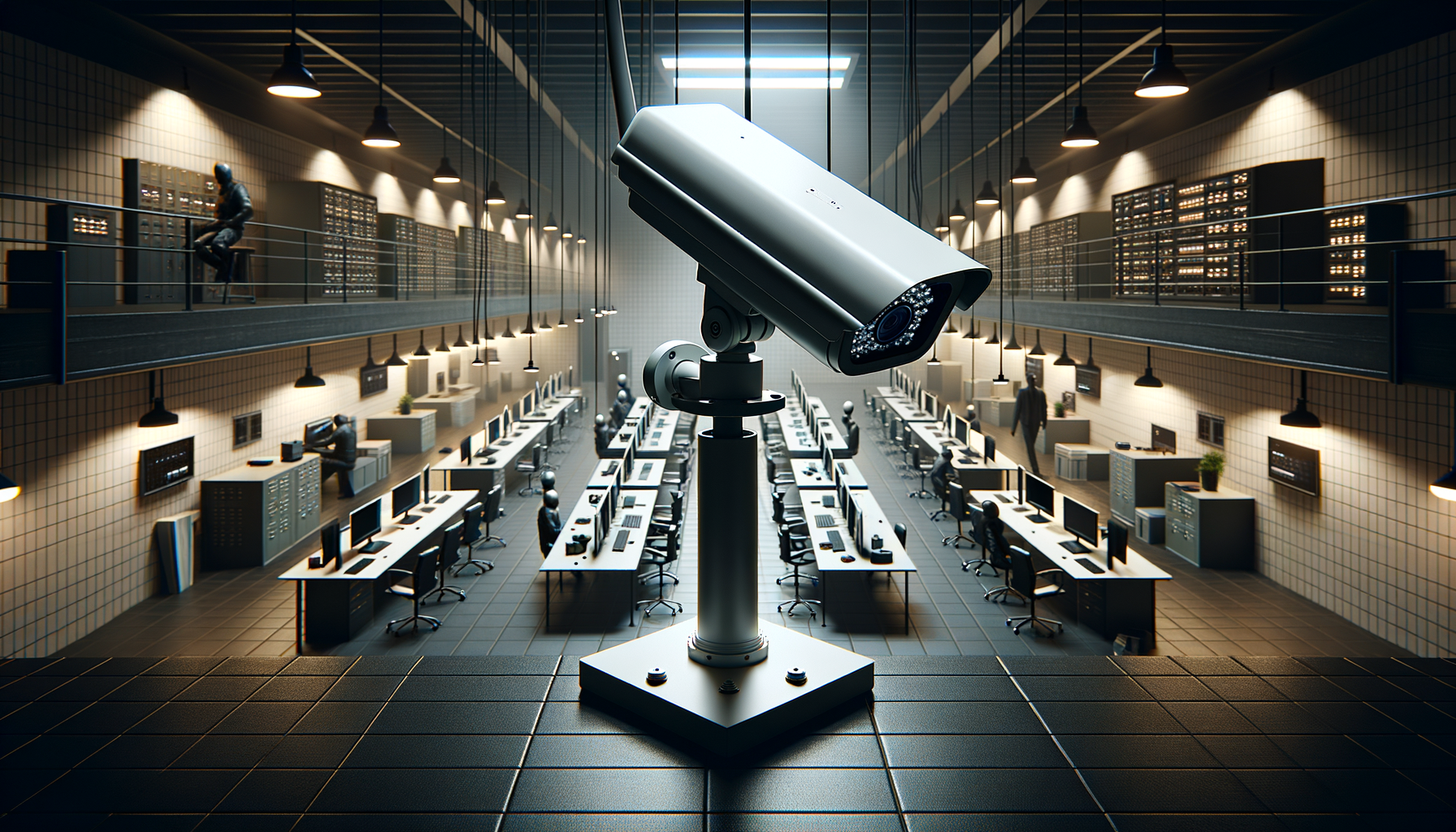Understanding the Basics of CCTV Cameras
CCTV (Closed-Circuit Television) cameras have become a cornerstone of security systems worldwide. These devices are designed to transmit video footage to a specific set of monitors, allowing for real-time surveillance and recording. The technology behind CCTV cameras has evolved significantly over the years, moving from analog systems to more sophisticated digital solutions.
At the core of any CCTV system are the cameras themselves, which can vary greatly in terms of features and capabilities. Some key types include:
- Bullet Cameras: Known for their long cylindrical shape, these cameras are ideal for outdoor use due to their weather-resistant housing.
- Dome Cameras: These are typically used indoors and have a dome-shaped housing that makes it difficult to discern the direction the camera is facing.
- PTZ Cameras: Pan-Tilt-Zoom cameras offer flexibility with remote control capabilities, allowing operators to adjust the camera’s view and zoom in on specific areas.
- Infrared Cameras: Equipped with IR LEDs, these cameras can capture footage in low-light or no-light conditions, making them perfect for nighttime surveillance.
The choice of camera depends on various factors, including the area to be monitored, lighting conditions, and desired level of detail. Understanding these basics can help in selecting the right CCTV system for your needs.
The Importance of CCTV in Modern Security Systems
The importance of CCTV cameras in modern security systems cannot be overstated. They serve as a deterrent to potential criminals, as the presence of cameras can discourage unlawful activities. This psychological effect is often enough to prevent crimes before they occur.
Beyond deterrence, CCTV cameras provide crucial evidence in the event of an incident. Recorded footage can be used to identify perpetrators, reconstruct events, and serve as evidence in legal proceedings. This capability is invaluable for both law enforcement and private individuals seeking justice.
Moreover, CCTV systems can be integrated with other security measures, such as alarms and access control systems, to create a comprehensive security network. This integration enhances the overall effectiveness of the security strategy, ensuring that different components work in tandem to protect property and individuals.
In today’s world, where security concerns are ever-present, the role of CCTV cameras in safeguarding homes, businesses, and public spaces is more critical than ever. Their ability to provide continuous surveillance and record events makes them an indispensable part of any security setup.
Advancements in CCTV Technology
CCTV technology has seen remarkable advancements over the past decade, driven by the need for more efficient and effective security solutions. One of the most significant developments is the transition from analog to digital systems. Digital cameras offer superior image quality, easier integration with other digital systems, and more advanced features.
Another major advancement is the rise of IP (Internet Protocol) cameras. Unlike traditional CCTV cameras that require dedicated cables, IP cameras transmit data over the internet or local networks. This capability allows for remote monitoring, making it possible to view live footage from anywhere using a smartphone or computer.
Artificial intelligence (AI) is also making its mark on CCTV technology. AI-powered cameras can perform tasks such as facial recognition, motion detection, and behavior analysis. These features enhance the ability to identify and respond to potential threats, making security systems more proactive.
Additionally, advancements in storage solutions, such as cloud storage, have made it easier to store large amounts of video data securely. This ensures that footage is accessible when needed, without the risk of physical damage or loss.
These technological advancements are transforming the way CCTV systems are used, making them more versatile and effective in addressing modern security challenges.
Choosing the Right CCTV System for Your Needs
Selecting the right CCTV system involves careful consideration of various factors. The first step is to assess the specific security needs of the area to be monitored. This includes evaluating the size of the area, the level of detail required, and the lighting conditions.
Once the needs are identified, the next step is to choose the appropriate type of cameras. For instance, outdoor areas may benefit from bullet cameras due to their durability, while indoor spaces might be better served by dome cameras for their discreet appearance.
It’s also important to consider the resolution of the cameras. Higher resolution cameras provide clearer images, which can be crucial for identifying details such as faces or license plates. However, they also require more storage space, so it’s essential to balance image quality with storage capacity.
Another consideration is the integration of the CCTV system with other security measures. Systems that can be easily integrated with alarms, motion detectors, and access control systems offer a more comprehensive security solution.
Lastly, budget plays a significant role in the decision-making process. While it’s tempting to opt for the most advanced system available, it’s vital to ensure that the chosen system meets the specific needs without unnecessary features that increase costs.
By taking these factors into account, individuals and businesses can select a CCTV system that effectively addresses their security concerns.
Maintaining and Upgrading Your CCTV System
Once a CCTV system is installed, regular maintenance is crucial to ensure its continued effectiveness. Routine checks should include cleaning the camera lenses, testing the recording and playback functions, and verifying the integrity of the connections and cables.
Software updates are also essential, especially for digital and IP-based systems. These updates can provide new features, improve performance, and address security vulnerabilities. Keeping the system’s software up-to-date is a key aspect of maintaining its reliability.
As technology evolves, upgrading the CCTV system might become necessary to keep up with new security challenges. This could involve replacing outdated cameras with newer models that offer better resolution or additional features like AI capabilities.
Another aspect of upgrading is expanding the system to cover more areas or integrate with newer technologies. For example, adding more cameras or incorporating smart home technology can enhance the overall security setup.
Regular maintenance and timely upgrades ensure that the CCTV system remains effective in protecting property and individuals, adapting to changing security needs over time.




Leave a Reply